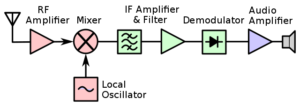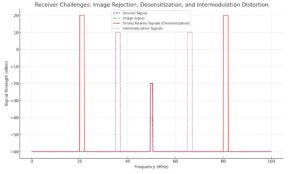



Start Here
The Receivers exam is a detailed exploration of the technological principles that underpin the operation of modern radio receivers, designed for those seeking to deepen their understanding and proficiency in amateur radio as part of the Advanced Amateur radio certification. It covers a wide array of topics, starting with the architecture of single and double-conversion superheterodyne receivers, which are fundamental to achieving high-quality signal processing across various frequencies. The exam probes into oscillators and mixers, essential for frequency conversion and signal tuning, and examines the role of RF and IF amplifiers in enhancing signal selectivity and strength.
Furthermore, candidates will be tested on their knowledge of detection mechanisms for demodulating signals, the intricacies of audio processing, and the importance of automatic gain control in maintaining consistent output levels despite varying signal strengths. The exam also critically evaluates common performance limitations encountered in receiver design, including instability, image frequency interference, and spurious responses, challenging students to identify and mitigate these issues in practical scenarios.
Be sure to login to your hamshack.ca account to track your progress by clicking the [Mark Complete] Button at the bottom of each lesson. You can contact VE7DXE to sign-up for the new Basic Amateur course.
The Receivers exam offers an in-depth assessment of your grasp on receiver technology, from the basics of superheterodyne architectures to advanced topics like selectivity, audio processing, and automatic gain control. It challenges you to understand and troubleshoot common performance issues, such as instability and spurious responses, preparing you for advanced amateur radio practice and design. This exam is an essential milestone for anyone looking to excel in the technical aspects of radio communication.
© Hamshack.ca. All lesson content, diagrams, and quizzes are proprietary and protected by copyright. Access is for personal use only and requires a valid course purchase where applicable. Copying, sharing, or redistributing any material is strictly prohibited. See the Hamshack.ca Terms of Use for full details.
